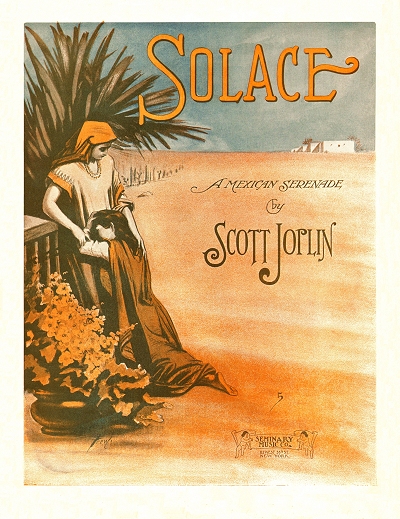
 John Frew (January 21, 1874 to September 20, 1955) | |
 Selected Covers (Hover to View) Selected Covers (Hover to View) | |
Very little is available on this talented artist whose primary legacy graces a number of large format covers from the early 1900s to around 1914. Frew was born in Ballymena, Ireland, on January 21, 1874, and immigrated to the United States in October 1895, remaining in the country as a non-declared alien resident for some time. He met his wife Molly Elizabeth Leroy in New York and they married on September 12, 1908. The 1910 census showed them residing in Manhattan with John listed as an illustrator. Frew's 1918 draft record listed him as a self-employed artist. For the 1920 enumeration he listed himself as a commercial artist Molly showed no occupation.


At one point it appears that Frew may have literally been a "starving artist," as he made the news when going to court in 1919 after his landlord for rent profiteering. This was after the rent for his West 58th Street apartment had jumped in half year from $45 per month to $52.50, then $70. He made it clear that during a previous winter he walked up and down six flights of stairs, understanding that tenants had a choice of heat or a running elevator. Frew further noted that finding any lodging in midtown Manhattan was hard enough, but that such abrupt increases made it unfathomable to either stay or move. His case was made particularly public, and along with a few others eventually prompted the 1920 Emergency Rent Laws in New York state. These demanded a standard of reasonableness for both rates and increases, and was eventually modified into the famous rent control that was the bane of landlords but necessary safeguard for tenants in Manhattan and surrounding New York City.
From 1903 into the late 1930s Frew took multiple trips back to the United Kingdom, likely both to visit family as well as keep his visa current as he retained his Irish citizenship. Molly accompanied him on many of these trips. The couple was found living with John's cousin Victor Stewart and his wife Irene Stewart on Riverside Drive in Manhattan for the 1930 census. Still listed as a resident alien in 1930, he had already filed an intention to become a US citizen in 1928, and was finally granted that privilege in January 1935. In their late fifties by this time, the Frews evidently never had children, or at least none were seen in government records. By 1940, Molly had died, but John was still residing with the Stewarts, and had no occupation listed in the census.
John was able to produce quality artwork on demand, and some of his concepts combine the simple with the intricate. In many cases the subjects would be well rendered with careful shading while the backgrounds were very basic. His work was not as dimensional as other serious artists, but covers such as the comical Dill Pickles Song and the entrancing Solace (done while publisher John Stark was still doing business in New York City) are nonetheless visually stimulating. His most widely circulated work, due in part to the success of the piece within, is the famous Alexander's Ragtime Band song cover. John Frew worked within a limited circle of New York publishers, and reputably suffered from eccentricities that many associated with artistic types, a factor that may have made his working relationships difficult. He also dabbled in comic and magazine/book cover art from the early 1930s through the mid-1940s, including the Astounding Stories line.
The 1950 enumeration, taken at the same address on 109th Street in New York as the 1940 record, presented a conundrum. Frew, now unable to work, was shown as residing with one Ernest Frew (1900) and John Frew, Jr. (1913). As they had not been found in any prior records, and searches of military and other official records could not confirm who they were, it remains a curiosity as to what these two gas station attendants were to John officially. Ernest would have had to been from a marriage or relationship prior to John's marriage to Molly. The association remains suspicious at best, all factors considered. John Frew died in a mental hospital in 1955 at age 81, having exhausted his funds, which could also be linked to those two men claiming to be his sons. Fortunately, much of his engaging work remains with us today in perpetuity thanks to his sheet music covers.